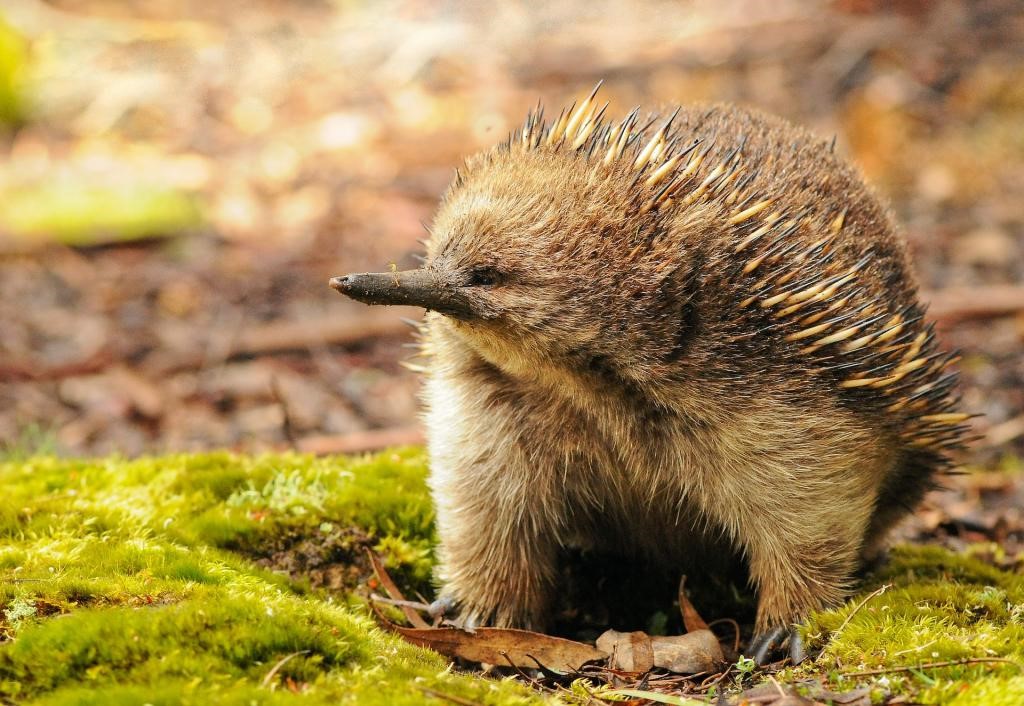
Disclaimer: Copyright infringement not intended.
Context
- Echidnas are fascinating and unique creatures that belong to the monotreme group of mammals.
Details
- Monotremes are egg-laying mammals, and echidnas, along with the platypus, are the only surviving members of this group.
- Echidnas are found in Australia and New Guinea, and they have several distinctive features and behaviors that make them interesting subjects of study.
- Often described as a curious blend of hedgehog and anteater, echidnas are even more enigmatic and remarkable than commonly thought.
Ancient Egg-Laying Mammals
- Short-beaked echidnas are among the five surviving monotreme species in the world.
- Monotremes lay eggs through cloacas and nurture hatchlings in pouch-like skin folds.
- Echidnas likely evolved from aquatic ancestors, retaining rudimentary electroreception.
- English name may stem from the mythological figure Echidna, reflecting its mixed traits.
Adaptable Explorers of Diverse Environments
- Echidnas are found across various climates, from tropical savannahs to snowy mountains.
- Five subspecies of short-beaked echidnas exhibit distinct adaptations in different regions.
- Variations in hairiness and spine characteristics are evident among subspecies.

Mating Behavior and Hibernation Strategies
- Kangaroo Island echidnas engage in mating trains with multiple males pursuing one female.
- Tasmanian echidnas have unique winter mating habits, allowing pregnancy delay.
- Different subspecies have varying lactation periods and mating-to-egg-laying durations.
Evolutionary Parallels: Marsupials and Monotremes
- Echidna embryos and tammar wallaby embryos reach similar developmental milestones.
- Despite evolutionary differences, both groups share a conserved developmental process.
- Echidnas tie this milestone to egg-laying and pouch incubation, while marsupials complete in-utero development.
Taxonomy and Classification
- Echidnas belong to the family Tachyglossidae and the order Monotremata.
- There are three species of echidnas: the short-beaked echidna (Tachyglossus aculeatus), the western long-beaked echidna (Zaglossus spp.), and the Sir David's long-beaked echidna (Zaglossus attenboroughi).
Anatomy and Physical Characteristics
- Echidnas are small to medium-sized mammals covered in spines or coarse hair.
- They have a distinctive beak-like snout, which contains both nostrils and a tiny mouth.
- Echidnas lack teeth, but they have a long, sticky tongue used for capturing ants, termites, and other insects, which make up their primary diet.
- Their limbs are short and sturdy, each with five clawed toes. These claws are used for digging and capturing prey.
Reproduction
- Echidnas are monotremes, which means they lay eggs rather than giving birth to live young.
- Female echidnas lay a single leathery egg directly into a pouch on their belly. The egg is incubated there until it hatches.
- After the egg hatches, the mother continues to nurse the young echidna by secreting milk from specialized mammary glands that are released through pores in her skin.
Behavior
- Echidnas are solitary creatures and are mostly active during the night.
- They are excellent diggers and spend a significant portion of their time digging burrows or hiding in crevices to escape predators and regulate body temperature.
- Echidnas are known for their unique defensive mechanism: when threatened, they can curl up into a ball, exposing only their spines for protection.
- Their diet consists mainly of ants and termites, which they locate using their excellent sense of smell and then capture with their sticky tongue.
Habitat and Distribution
- Echidnas are found in a variety of habitats, including forests, grasslands, deserts, and mountains, across Australia and New Guinea.
- They are adaptable creatures and can live in diverse environments, from arid regions to more temperate zones.
Conservation Status
- Echidnas are generally not considered endangered; however, some localized populations may be at risk due to habitat loss, vehicle collisions, and other human-related factors.
- As with many wildlife species, maintaining their habitats and minimizing human interference is important for their long-term survival.
Evolution and Predecessors
- Monotremes are among the most primitive mammals, and they share common evolutionary traits with reptiles and birds.
- The lineage of monotremes diverged from that of placental mammals (like humans and most mammals) over 200 million years ago.

Conclusion
echidnas are captivating creatures with a long evolutionary history and remarkable adaptations. Their egg-laying reproductive strategy, spiny defense mechanism, and specialized diet contribute to their uniqueness and significance in the natural world. Studying echidnas provides valuable insights into the diversity of life on Earth and the various ways organisms have evolved to survive and thrive in their environments.
|
PRACTICE QUESTION
Q. Which of the following statements about echidnas is true?
a) Echidnas are placental mammals.
b) Echidnas lay eggs and incubate them in a pouch-like skin fold.
c) Echidnas are primarily carnivorous and hunt large prey.
d) Echidnas are found only in South America.
Correct answer: b)
|
https://www.downtoearth.org.in/blog/wildlife-biodiversity/they-sense-electric-fields-tolerate-snow-and-have-mating-trains-4-reasons-echidnas-really-are-remarkable-91397




